#British BMC
Photo
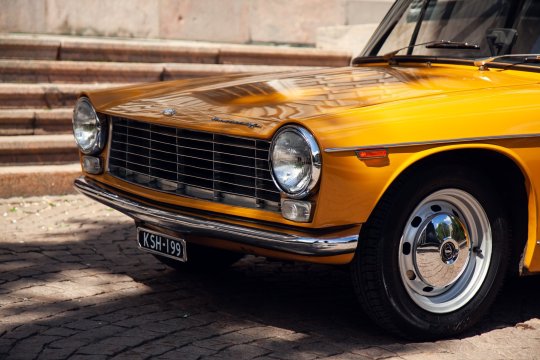

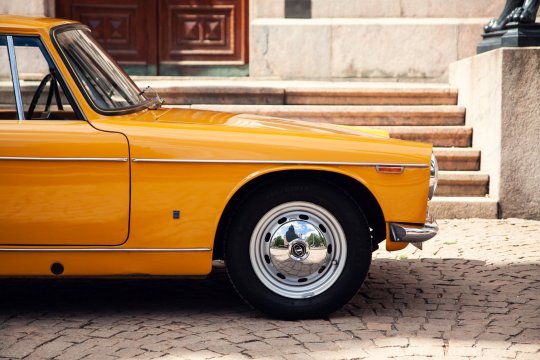

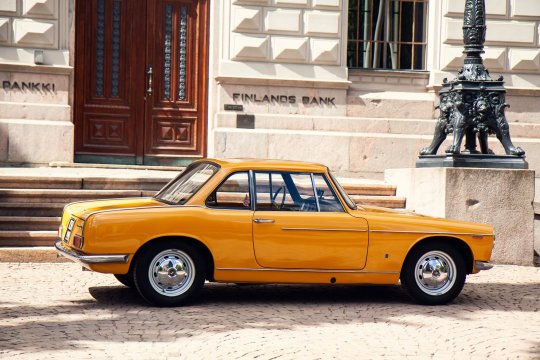

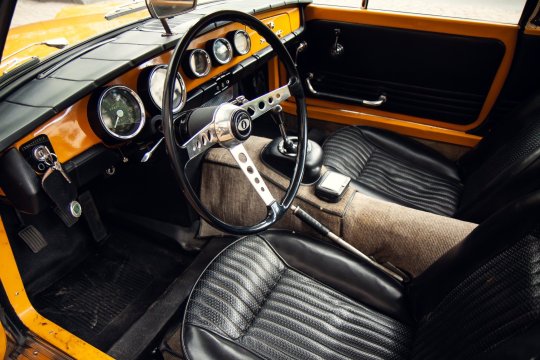


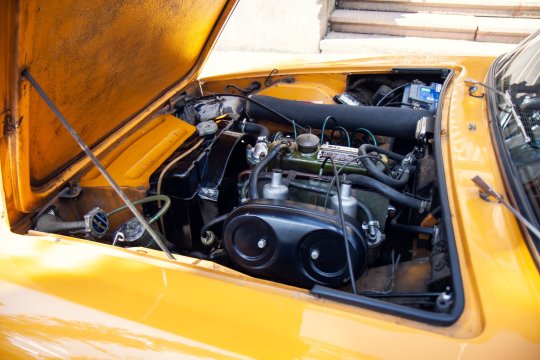
Innocenti C coupé
Born in Piscaia, Tuscany in 1891, Ferdinandi Innocenti started his business career by establishing a hardware store in Rome. The business grew, and in 1920 Ferdinandi established a factory in northern Italy in Milan, in the Lambrate district. The factory produced everything from soccer stands to railways, and the reconstruction boom in Rome in particular boosted demand.The factories suffered in the Second World War, but Innocenti had kept them up and running productively for wartime needs even through difficult times. After the war, the factories also started producing for the vehicle industry, inspired by military motorcycles. Enrico Piaggio had introduced the Vespa in 1946, and Innocenti introduced their first scooter, Lambro River by Lambretta, just a year later. The scooters became a huge success and were manufactured under license in Spain, India, Argentina, Germany, France and Brazil.At the end of the 1950s, another economic boom followed in Italy, and the working class could for the first time get their own car, such as the Fiat 500. Ferdinando's son Luigi had taken over as vice president of the company and began to explore the possibilities of manufacturing passenger cars. A cooperation partner was first found in Germany, and a small Iseria passenger car was born in cooperation with Goggomobil. However, production was very marginal until the early 1960s when Innocenti entered into a cooperation agreement with the British BMC and began to produce Innocenti Austins and Mini Minors under license.Innocent's first in-house model followed just a year later when it introduced the Austin-Healey Sprite-based 950 Spider. Encouraged by Innocenti’s first sports model, the collaboration with Ferrari also began, and two 186 GT prototypes equipped with the V6 from Maranello were completed, until Ferrari decided to bury the project in 1966.
Innocenti was not discouraged, and developed their own small Coupé model, which was presented later in the same year. Ghia used the earlier Spider model as the basis for the design, and Sergio Sartorelli, who has made a name for himself with models like the Karmann Ghia Type 34 and the Fiat 2300 S, was given the main responsibility for the design. The wheelbase was extended and the rear of the car was completely redesigned. Special attention was paid to the quality of the materials in the interior, and the GT spirit was also exuded by dashboard including five gauges, the oil pressure gauge was straight from the Ferrari 250 GTE. New Innocenti C was powered by BMC's A-series 1098cc engine, producing 58bhp with two SU carburettors – enough for a coupe with a curb weight of just 695kg.
#Innocenti C coupé#Ferdinandi Innocenti#Enrico Piaggio#Goggomobil#British BMC#Ferrari#186 GT#Fiat 2300 S#Ferrari 250 GTE#Fiat 500
118 notes
·
View notes
Photo

1966 MG MGB 1800
#1966 MG MGB#MG#MGB#BMC 1800 MGB#CLASSIC CARS#CLASSIC BRITISH CARS#VINTAGE CARS#CLASSIC MG#VETERANBIL#CARSPOTTING#BRITISH CARS#MG 1800#MGB 1800
106 notes
·
View notes
Text

Austin Allegro - Version 4.
www.axesent.com
#austin#british leyland#bmc#allegro#render#illustration#custom#british cars#classic#stance#axesent#kansei gazou
71 notes
·
View notes
Photo
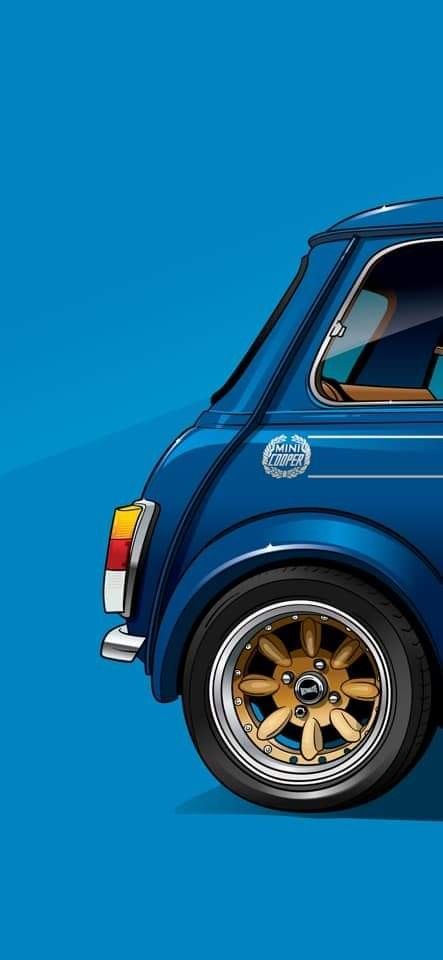
224 notes
·
View notes
Text

babes im so sorry im not being normal abt anything rn,,,
#sundrop fic In My WIPS#narrator from tspud In My Brain#the squip and bmc Also In Brain....#and OhHohoHoHo... welcome home.... i shan't talk about it....#i love. uh. fnaf. and office game with British Voice. and Stupid Musical. aaandd Puppet ARG#im NOT NORMAL ABT ANY OF MY INTERESTS RN I FEAR A HIATUS IS NEEDED#no actual drive to write just thinking <3#valentine's rambles
5 notes
·
View notes
Text

#Mini#Rally de Montecarlo#historia#Paddy Hopkirk#Timo Mäkinen#Rauno Aaltonen#Mini Cooper S#Alec Issigonis#British Motor Corporation#BMC#John Cooper#Pat Moss#Stirling Moss#Flying Finn#37#matrícula 33 EJB#Beatles#24 horas de Nürburgring#Rally Dakar
1 note
·
View note
Text
International action is getting back on track at Tooting Bec
Top track action returns to south London next month, with international distance runners potentially taking one of their last chances to chase down qualifying times for the World Championships in Budapest in August.
Mile moment: American duo Hobbs Kessler and Eric Avila cracking the four-minute mile barrier at last year’s BMC meeting at Tooting Bec
Tooting Bec Athletics Track is staging a special…

View On WordPress
#BMC#British Milers&039; Club#Herne Hill Harriers#Jake Wightman#Kelly Holmes#Steve Ovett#Tooting#Tooting Bec Athletics Track
0 notes
Photo

British Leyland Mini
1 note
·
View note
Text
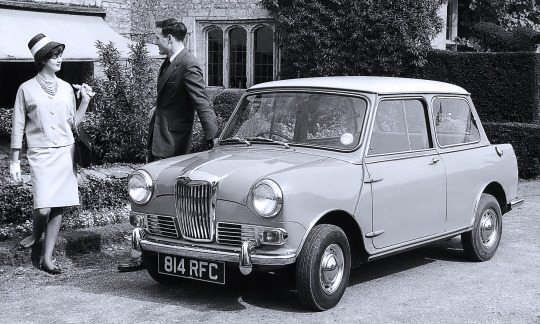



Riley Elf, 1961. Riley started as a bicycle maker in 1890 and went on to make cars becoming part of BMC (the British Motor Corporation) in 1952. The Elf was a badge-engineered up-market version of the ADO15 Mini. It featured an extended rear that gave it a larger luggage compartment and a "3-box" profile. It remained in production through 3 series until 1969 when BLMC was formed and the Riley marque was discontinued.
#Riley#Riley Elf#ADO15#BMC#badge engineering#1961#1960s#1960s style#3-box#Mini#transverse engine#up-market#dead brands
177 notes
·
View notes
Text
all of you sappyposters have forced me to sappypost i am such an emotional creature 😭😭 i also had nothing prepared so here’s a drawing i did on snapchat of ashley in a pumpkin magical girl outfit

ANYWAY sappypost time
i don’t want to bore you all with my broken record incel words but my godddd have i had a horrible personal year i was very screwed over by some of the nastiest little fucks the british isles has to offer and i was totally agoraphobic for the summer! which wasn’t cute! but it led me here!
and i’m so happy it did! i can’t believe how little time it’s been since i met you all but you’re all so important to me and make my life so much brighter— i’ve always been a person that survives on social media but with all of you i have more than survived (bmc ref in 2024?!) and i am so grateful to have all of you as friends! you’re the sweetest, loveliest people ever!
you’ve all made such a difference to my life! since finding friendship with all of you i’ve been able to make friends irl and i’ve taken up bloody FIC WRITING like my god what the hell 😭 i love it though it’s my favourite thing and i never would’ve gotten into it without all of you!! so thank you all for bringing a bit of happiness into my sad emo life, which i hope will become a happy emo life in 2024– i love you all 💗💗💗 happy new year and i hope you all have lovely 2024s 🫶🫶🫶
28 notes
·
View notes
Text
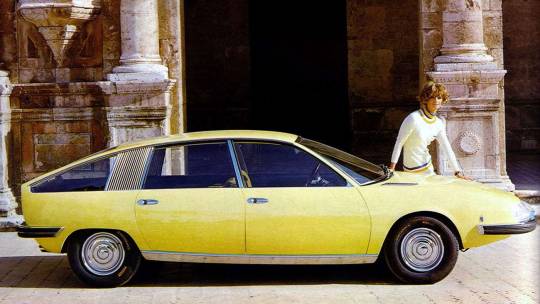
BMC 1800 cc ''Berlina Aerodinamica'' 1967 by Pininfarina. - source Mounir Naji via Old British Cars.
29 notes
·
View notes
Text
Top 10 Innovative Cars
The cars of today owe a lot to the vehicles that came before them. Car design has always been about innovation and breaking new ground, but it's rare to find an automobile that can genuinely be said to have changed everything that came afterwards. The cars in this list were not your average motors - each and every one of them had an influence that reached far beyond their original conception. Here are the unique stories of ten of the most innovative and influential cars ever produced.

Ford Model T (1908)
The first massed produced automobile.
The Model T - colloquially known as the Tin Lizzie - is generally regarded as the first affordable car in the world, and the vehicle that opened up a world of automobile travel to the middle classes. Ford's assembly line production made it all possible, setting a standard of manufacturing that influenced almost every industry in the world. Produced between 1908 and 1927, more than 15 million Tin Lizzies were sold, and the car gave mobility to the masses. For that reason, it is often considered to be one of the most influential developments in the history of design and production.

Rolls Royce Silver Ghost (1908)
The first military car.
At the time of its development, the beautiful Rolls Royce Silver Ghost was considered to be at the forefront of luxury car design. However, it was to become something much more important than a toy for the rich. In 1914, all Silver Ghost chassis were re-purposed to form the basis for a brand new armored car, and the vehicles ended up playing a significant part in World War I, the Irish Civil War, the Turkish Wars and even World War II. In doing so, the Silver Ghost gave birth to the modern concept of mechanized military conflicts and ended the days of the horse cavalry.
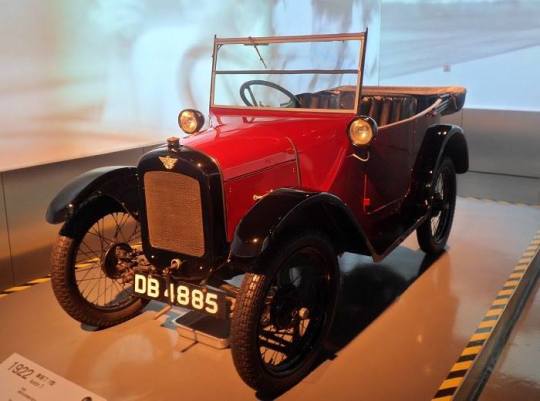
Austin Seven (1922)
The first 'people's car'.
The Austin 7 is a legendary British car that was hugely successful both in its home country and abroad. It is often seen as the forerunner to the modern automobile as we know it, and made a huge impact on the economy car market that was comparable to the innovative inroads made by the Ford Model T fifteen years before. It is seen as the first 'people's car' that further popularized motoring, and it was re-bodied to form the basis for the first cars produced by BMW, Nissan, Lotus, Jaguar and the Australian firm Holden.

Volkswagen Beetle (1938)
The mechanical innovator that became a cultural icon.
It's hard to find another automobile with the rich history of the Volkswagen Beetle. The brainchild of Ferdinand Porsche, it was one of the first rear-engine automobiles and was specifically designed to travel at 100kph on Germany's autobahn highway system. It also featured one of the world's first air-cooled engine designs, but its impact went way beyond its mechanical innovations. Its production lasted for 65 years between 1938 and 2006 - the longest ever run for a single design concept - and it was the first car to truly become a cultural icon (helped by the 'Herbie' films of course), showing that motor cars had a place in wider entertainment.

BMC Mini (1959)
The early 'hot hatchback'.
Another car that gained an influence outside of the motoring world is the much loved BMC mini. It was conceptualized as a car for everyone and went on to be produced in over 100 variants in countries all over the globe. It was also one of the first modern front wheel drive cars, and made the idea of the small 'hot hatchback' cool. This simple, little car which came to symbolize the 'swinging' 60s, was one of the first efficient 'city' cars and became a rally car, racing legend and movie icon in pictures like The Italian Job.

Citroen DS (1955)
The groundbreaking car that influenced car design for years.
The Citroën DS always occupies high places when experts are looking to crown the best car of all time, and with good reason. This executive car was years ahead of its time and it's widely accepted that every modern car model can in some way trace its design back to the DS. It was the first mass production car to include disc brakes, featured an aerodynamic body design considered futuristic at the time but standard today, it had hydraulic suspensions and revolving headlights, and sold a then-record 12,000 units on its first day of release. It remains one of the most influential automobile designs ever produced.

Jaguar E-Type (1961)
The luxury icon of the 1960s.
The Jaguar E-Type is one of the most beautiful sports cars ever to grace the road, and a legend of 1960s design. At a time when most cars were more about practicality than style and performance, the E-Type boasted top of speeds in excess of 150mph and could travel 0-60mph in under 7 seconds. It was the first production vehicle that didn't feature a body fixed to a separate chassis, instead, it employed a 'racing design' where the body was attached to a tubular framework. It will always be associated with high performance and sleek sophistication, and it influenced sports car designed long after it left the production line.
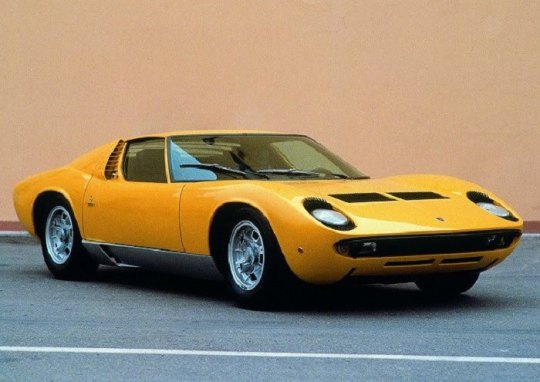
Lamborghini Miura (1966)
The world's first super car.
The Lamborghini Miura was the world's first super car, and pushed the boundaries of what people thought was possible in automobile design. It ushered in the era of the high-performance, two-seater sports car and was lightning quick - comfortably the fastest road car in production when it was first released. The design shared much more in common with the race cars of the day, rather than the sleek touring car designs that had previously been favored by car firm bosses, including Ferruccio Lamborghini himself, who objected the original concept for the Miura, forcing the company's engineers to design it in their spare time.

Chrysler Minivan (1983)
The first ever multi-passenger mini-van.
In 1983, Chrysler effectively invented the Minivan and changed the way cars were conceptualized for good. The Minivan's design grew from the need for a vehicle suitable for larger families, which still retained the driveability of a normal car. It looked boxy, but had a sliding side door that made loading the kids in the car easy, yet it was small enough to fit in a standard parking spot. Owning one came to symbolise both financial, adult success and, paradoxically, 'lost youth' in 1980s America. The car changed the landscape of automobile design forever.

Toyota Prius (1997)
The world's first mass-produced electric hybrid vehicle.
The Toyota Prius was the first mass-produced hybrid, electric vehicle in the world, and its influence is probably yet to be fully realized. Just as the Model T and Austin 7 brought automobiles to the masses, the Prius broke new ground in the important quest for an electric powered alternative to modern gas guzzlers and remains one of the most environmentally friendly cars sold to date (now in its fourth generation, it remains in production). For all these reasons, the Prius deserves its place on this list of the most innovative car designs of all time.
#car#cars#toyota prius#toyota#Chrysler Minivan#Chrysler#lamborghini miura#italian cars#supercars#classic car#lamborghini#miura#jaguar e type#jaguar#citroen ds#citroen#auto#automobile#BMC Mini#BMC#Mini#volkswagen beetle#classic cars#volkswagen#Beetle#Austin Seven#Austin#Seven#Rolls Royce Silver Ghost#rolls royce
79 notes
·
View notes
Text

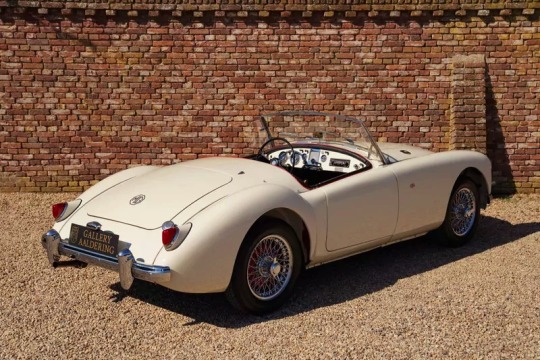
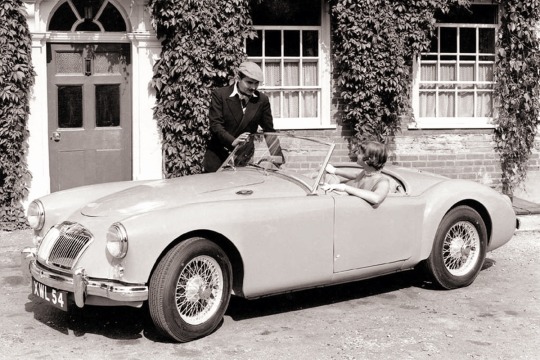


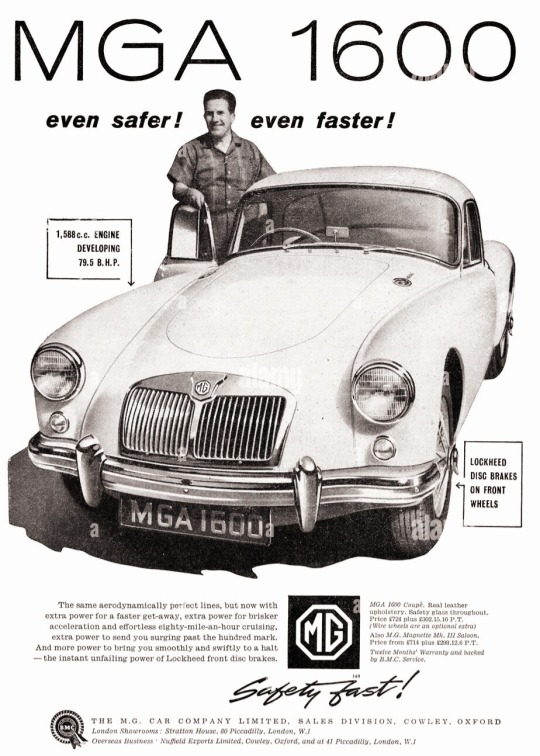
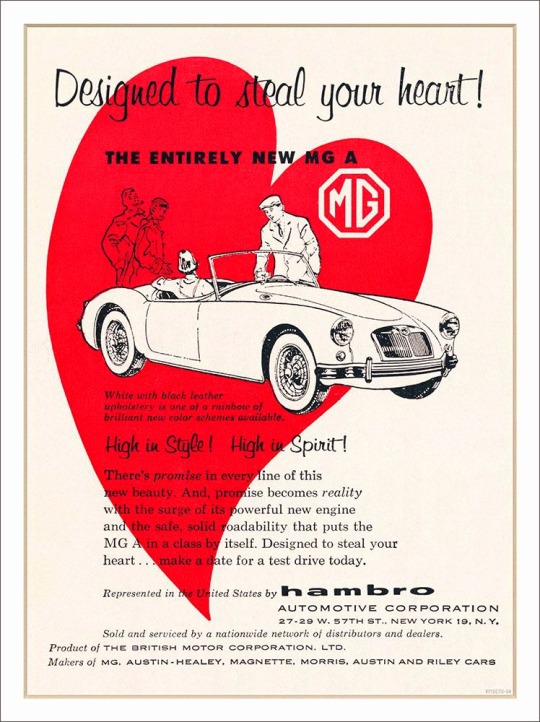

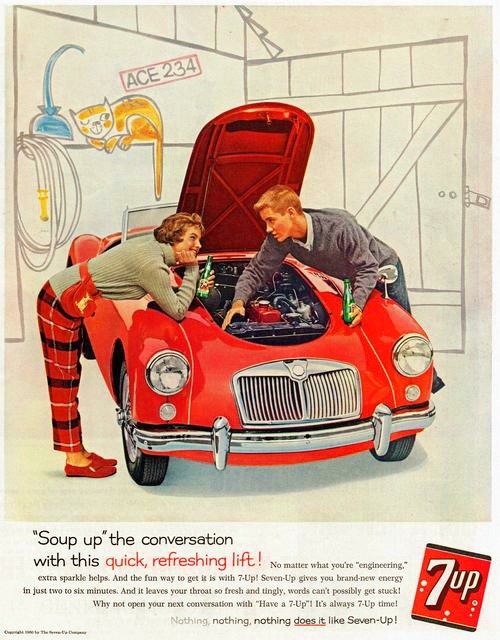
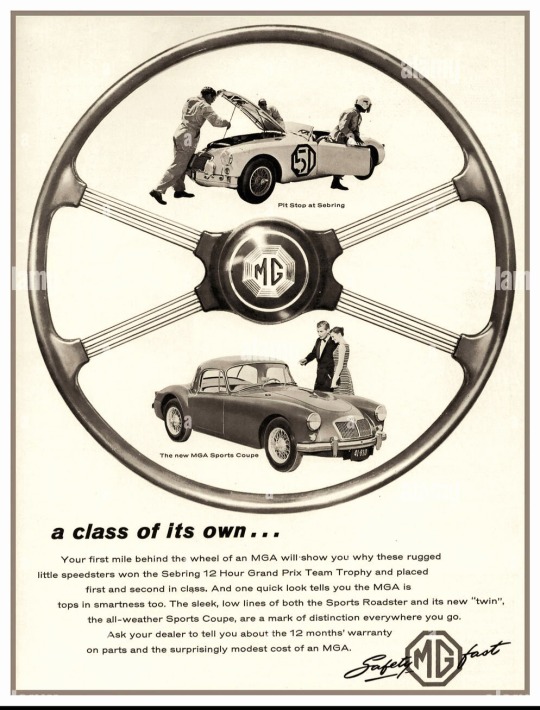
🇬🇧 Explore the captivating history of the MG MGA—a timeless classic that embodies the essence of British automotive craftsmanship! Introduced in the 1950s, the MGA made waves with its striking design and exhilarating performance, captivating drivers around the globe.
👉 The MG MGA marked a significant milestone for MG sports cars. Announced on 26 September 1955, the car was officially launched at the Frankfurt Motor Show. With its sleek contours, graceful curves, and distinctive grille, the MGA epitomized elegance and sophistication on the open road.
🛞 The MGA design dates back to 1951 when MG designer Syd Enever created a streamlined body for George Philips' TD Le Mans car. As it was so different from the older MG models, it was called the MGA, the "first of a new line" to quote the contemporary advertising. There was also a new engine available; therefore, the car did not have the originally intended XPAG unit but was fitted with the BMC B-series engine allowing a lower bonnet line.
🚗 Underneath its sleek exterior, the MGA boasted a lineup of powerful engines, delivering an unforgettable driving experience characterized by agility and precision. Whether navigating winding country roads or zipping through city streets, the MGA offered a thrilling ride that left a lasting impression.
👑 The MG MGA quickly gained iconic status, earning recognition in pop culture and becoming a symbol of automotive excellence. The MGA has been raced extensively in the U.S. since its 1955 introduction and with considerable success. In Sports Car Club of America competition, the MGA has won numerous regional and national championships.
🌟 Whether admired for its iconic aesthetics, dynamic performance, or rich heritage, the MG MGA continues to evoke passion and admiration among collectors and enthusiasts worldwide.
#brits and yanks on wheels#retro cars#transatlantic torque#vehicle#cars#old cars#brands#companies#automobile#english cars#made in uk#made in england#england#mg#mg motor#british motor corporation#british cars#british leyland#mg mga#mg rover group#sport cars#sports cars#race car#racing#sports car club of america#design#designer#championship#exterior#syd enever
9 notes
·
View notes
Photo

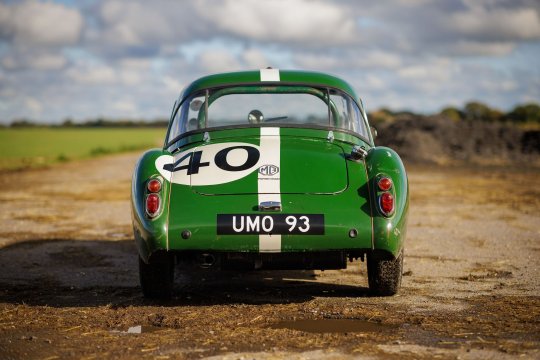


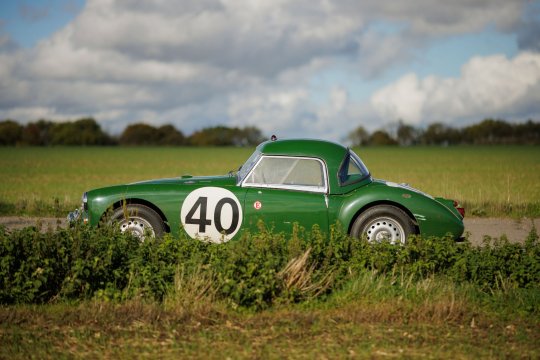

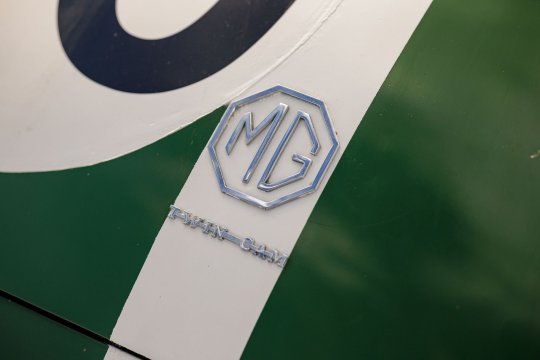
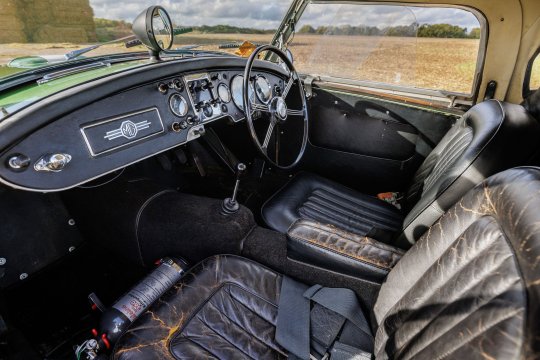


MGA Twin-Cam
From the late 1940s until the MG factory at Abingdon closed in 1980, it was the huge American demand for British sports cars that brought sufficient orders to keep the production lines in business. While other countries around the world and the home market were important, none was as important as North America. The modern-looking, streamlined MGA was introduced in 1955 and this too proved to be a sales success in MG's most important market. Of a total production of 101,081 MGAs, 81,401 were exported to the USA, some eighty-one per cent of the total market.
Owing to the importance of this market, it was not surprising that BMC was keen to support any efforts MG might make to promote their products in America. One route was through record breaking attempts such as the supercharged MG Twin Cam EX181 which Stirling Moss and Phil Hill drove in 1957/9, setting world class records. The other was through sports car racing. Perhaps the most important circuit for MG in the post-war period in the USA, and also a major fixture on the international racing calendar, were the races held on an airfield circuit near Sebring in Florida.
These were established in 1950 by former Briggs Cunningham team manager, Alec Ulmann, who decided to mimic the French 24 Hour Le Mans concept by running endurance races for production sports cars. From the first six hour race in 1950, MGs figured well in both overall and class results. From 1951 the race was lengthened to 12 hours and was particularly gruelling owing to the bumpy nature of the circuit. In that year an MG special placed fourth overall and TDs won the team prize. By 1956 the MGA had arrived and three north American MG importers entered standard cars with aero-screens and straight-through exhaust systems, finishing a credible fourth, fifth and sixth in class. The following year they were more successful, taking the team prize and gaining first and second in class.
In 1958 the higher performance Twin Cam had been announced, but there were no officially-supported MG entries that year. In 1959 the competition department at Abingdon became serious and prepared three Twin Cam coupes to race and shipped over a mass of spare parts and a fourth practice car. Entered through the MG concessionaires, The Hambro Corporation, all three cars finished in a very wet race including a second and third place result in the 1,300cc to 1,600cc class. A class win at Le Mans also added to the momentum so in 1960 Abingdon once again prepared the factory team, this year with many more modifications. For racing the three cars got bigger SU-carburetors, a close-ratio four-speed gearbox, locked differentials, bigger fuel-tanks, a modified cold-air inlet system and additional oil coolers. The bumpers were deleted, lightweight alloy-hardtops from Vanden Plas, and a special cockpit tonneau panel to accommodate a hypothetical traveling suitcase (a new FIA requirement for 1960). two additional spotlights, while the whole car got a typical painting in British Racing Green with different stripes per car to distinguish them on the track.
The three race entries were registered UMO 96, 93 and 95.
90 notes
·
View notes
Text




1960’s British SBS (Special Boat Squadron) Ventile “Canoeist Smock”.
These highly unusual Ventile smocks were made for a very short period of time during the 1960’s in seemingly near nonexistent numbers for a very small and specialized British Special Forces unit. The Special Boat Service is an incredibly elite and highly secretive unit within the British Royal Navy that has an unbelievable history of service throughout WW2 all the way up until present day where they are largely responsible for maritime counter-terrorism. They are essentially the UK’s answer to the US Navy SEALs and are mostly made up of Royal Navy Commandos. The smock is about a niche as they come, being made specifically for Canoe/ Kayak operations. It features a number of very unique pockets including the huge back pocket which could be accessed by the person sitting behind the wearer, the huge iconic angled map pocket on the chest, as well as a tiny pocket on the hood itself, possibly for a compass. All pockets feature small eyelets at the bottom for water drainage. Like many of the fine British Military Ventile smocks of the 50’s/ 60’s this example was made by Belstaff as can be determined by the almost unreadably faded BMC stamp shown in slide 4, next to the Broad Arrow.
44 notes
·
View notes
Text
conversations with my THEATRE friends/ things they said as BMC characters (because my theatre friends say some weird as shit):
Christine: *does a british accent*
Jeremy: Why are you doing an accent?
Christine: I'm method acting!
Jeremy: You're a meth addict? What?
Jeremy: I got made fun of today...
Michael: ...And I will kill them, when I meet them 🔪
Jeremy: They made fun of me for sticking up for the special need kids
Michael: What? Don't listen to them, and please keep standing up for them! I'm so sorry! You deserve so much better! Don't worry, in not too long they'll be gone.🔪🔪
Jeremy: Do you know the muffin man?
SQUIP: Yes, I love the muffin man, he is a murderer and I love murderers
Jeremy: WHAT
#be more chill#bmc#be more chill incorrect quotes#squip#jeremy heere#christine canigula#michael mell
20 notes
·
View notes